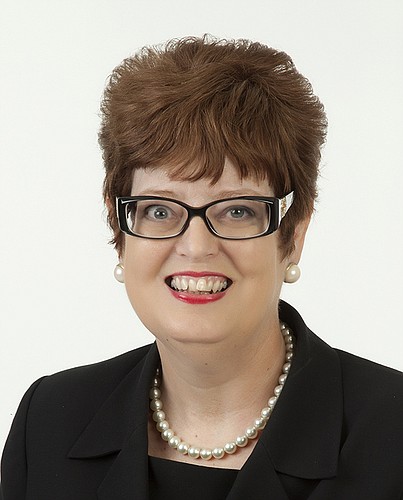MARYANN MIZE
Senior VP and Senior Credit Officer, Charlotte State Bank and Trust, Murdock
Maryann Mize has been with Charlotte State Bank and Trust, one of Charlotte County and Southwest Florida's leading commercial real estate lenders, for 26 years. She is responsible for overseeing the bank's commercial lending operations.
In addition to her knowledge of banking, Mize also is CCIM certified, a prestigious designation earned by fewer than 10% of all commercial real estate professionals. In 2008, she began teaching CCIM classes, giving her added insight into commercial real estate trends. Today, she also serves on national Certified Commercial Investment Member Institute subcommittees.
Do you see anything that could curtail the current commercial real estate growth in Southwest Florida?
In Charlotte County, where I am based and my expertise lies, the commercial real estate sector has a lot of positive momentum. I base that on recent figures that show increased absorption of space, declining vacancies and increased sales, especially of (residential) condominiums and retail and office spaces. And in a few property-specific sectors, there's been some nice appreciation in the past two to three years, especially.
Why do you think there hasn't been a tremendous amount of office development in Southwest Florida this cycle, amid the residential growth?
In Charlotte County specifically, but really throughout much of the region here, we're still in an absorption phase, the result of overbuilding and frothiness from a decade ago, when more new product came to market than could be absorbed. As such, there are still a lot of good bargains out there, and very little justification for new construction.
How does this cycle differ from the extended growth period of a decade ago?
I think, and hopefully this is true, that stakeholders learned some valuable lessons from the Great Recession. A decade ago, for instance, the commercial real estate market here and elsewhere had a lot of speculative building, in all different product types. There was a lot of new office space that came out of the ground, as I mentioned before. And of course, there were a lot of single-family homes that were built, too, which seeds commercial development. Charlotte County first noticed the green shoots of recovery in 2012.
What's the biggest change in commercial real estate financing that you've witnessed in recent years?
I think the biggest change to underwriting is found in the fact that there are still bargains to be had out there. That underpins everything else, from finance to construction. You can still buy at prices that are much lower than the cost to build, and that influences financing decisions.
There's been considerable attention paid to the role of non-traditional lenders in this cycle. How are lenders like Charlotte State competing in that new environment?
There have always been non-traditional lenders in the market, but because there are billions of dollars being allocated annually by foreign and domestic investors to commercial real estate, I think lenders like community banks will always get a share of that pie.
They will always have a big role to play, because of the fact that they can often do more creative financing, community banks typically have superior local market knowledge and they can make swifter decisions and have faster closings. And non-traditional lenders often don't have an appetite for all sectors or geographic markets.






